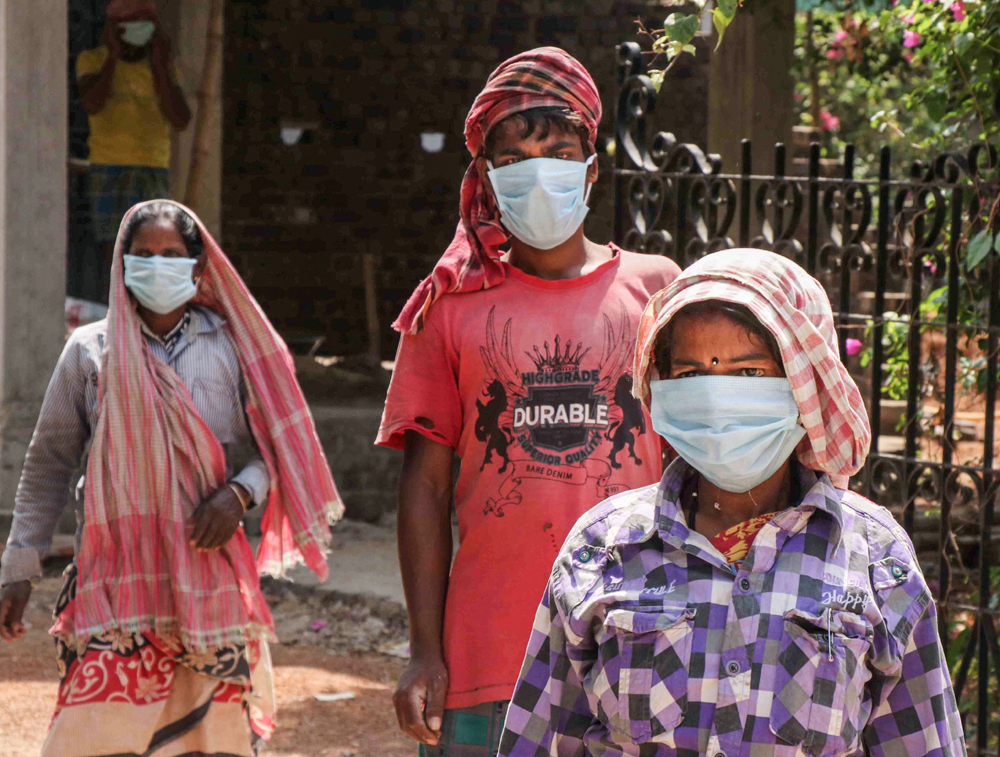On Saturday night, Rajasthan ordered a “complete lockdown”, barring essential and medical services, across the state till March 31. The step is by far the broadest measure taken in the country to prevent the spread of the coronavirus.
- A few hours earlier, Prime Minister Narendra Modi sought to turn back a rising tide at railway stations by appealing to the people to stay put wherever they were and avoid travel for a few days. The attempt is to halt a large mass of potential carriers, unsure of the fate of their income-earning avenues, from criss-crossing the country.
- Around the same time, a fourth patient tested positive for Covid-19 in Calcutta. No foreign travel history or contact with travellers from abroad has been declared in the admission form.
- Delhi airport witnessed chaos as many rushed to land before a ban on international commercial passenger flights kicked in.
India is taking a series of incremental steps to halt the spread of the coronavirus. On Saturday night, the country had around 290 Covid-19 patients under treatment, not an alarming figure at first glance. The cumulative cases, including patients who have been cured, are 315.
Multiple views will always be at play when a country — in this instance, almost the whole world — is staring at the unknown. Whether swifter, harsher and more drastic steps should have been taken or whether staggered measures are more apt when resources are scarce and many cannot afford to completely freeze earning activities.
Congress president Sonia Gandhi has said extraordinary situations demand extraordinary measures. Prime Minister Modi is leading a “Janata Curfew” on Sunday, some viewing it as a stepping stone for more concrete measures.
If the sense of urgency has been somewhat diluted by the call to clang vessels and clap hands — Bangalore police were taking it seriously, warning citizens of action if they are found outside and they argue with the uniformed personnel — perhaps it is time to ask whether India can any longer afford such preparatory steps.
Again, there are no tried and tested precedents to figure out the inflexion point.
Science, although it is yet to find a vaccine or cure for Covid-19, does have models that can simulate situations. But they are dependent on multiple factors and any assumptions based on such models run the risk of being branded panic-mongering.
Columbia University researchers have used New York Times database of known cases and census transportation data to model how the outbreak could evolve based on what is known about the coronavirus. The model projects three scenarios for how the outbreak could spread: no control measures, some control measures and severe control measures.
The inherently uncertain estimates offer a stark warning: America needs to take stringent measures to stem the tide of illness and death in the coming months.
It is against this long backdrop that The Telegraph is reporting about a mathematical study that has attempted to explore how the situation might unfold in India if no more stringent measures are taken.
The objective is not to feed the cauldron of conspiracy theories but to approach the issue with a scientific temperament that may help policymakers to pace their responses and strengthen the resolve of the general public to adhere to government guidelines.
Seven in 10 Indians could be infected by the coronavirus under its current observed growth rate in the country without any additional social distancing measures or behavioural changes, the mathematical study has predicted.
The study by researchers at the Institute of Mathematical Sciences, Chennai, has underscored the need for quick detection and isolation of coronavirus patients and additional social distancing measures to avert what otherwise could be an epidemic that would overwhelm India’s healthcare services.
Infectious disease modellers at the IMSc who have tracked the rise in coronavirus patients’ numbers in the country from March 4 had projected that India by March 22 would have roughly 200 but at the most 500 active cases —not counting those who have recovered or died earlier.
This projection was more or less in line (if not conservative) with the Union home ministry’s update on Saturday evening documenting 256 active cases across 22 states in the country. Twenty-three persons have been discharged and four patients have died. The cumulative figure rose to 315 at night.
Without a change in this growth rate, India could have around 1,000 cases or up to 2,000 cases in the worst case scenario by March 31, the analysis by IMSc has suggested.
“But as the epidemic progresses and the measures put in place by the government start to make impact, the growth rate of the infection may start to change, in which case our projections will become inaccurate,” said Sitabhra Sinha, a researcher at the IMSc who led the study.
Sinha and his colleagues have calculated that R0, or the basic reproductive number of this coronavirus — the average number of persons that an infected patient can spread — in India is 1.7, lower than the 3.3 in Denmark or 2.3 in Italy but higher than 1.4 in France.
“We don’t know yet why R0 is 1.7 for India — there may be physical, climatic or social factors,” Sinha said. “One possibility is that the early measures the Indian government had initiated have had some impact.”
India began isolating patients and tracing their contacts as soon as the earliest cases were detected in Kerala.
However, the study predicts that with an R0 of 1.7, around 70 per cent of India’s population could be infected by the coronavirus before the epidemic reaches a point where the virus cannot find any susceptible people.
“This is likely to occur in the absence of any further interventions,” Sinha said. The study’s findings imply that in the absence of any vaccine to prevent the infection, the public would need to continue with personal precautions such as hand hygiene and respiratory etiquette along with social distancing measures.
Critical care specialists say a 70 per cent infection could overwhelm healthcare services if the patient load burgeons quickly over time.
An Imperial College, London, modelling study released earlier this week had assumed a 4.4 per cent hospitalisation rate and that 30 per cent of hospitalised cases would require critical care.
With these numbers, around 10 million people might require critical care service over the course of the epidemic.
But concerted and rapid action may help lower that number significantly.












